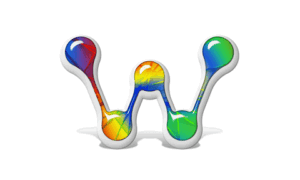Google Ads is a powerful platform for driving traffic, leads, and sales, but it is crucial to measure and optimise your campaigns to achieve the best results. Tracking the right metrics allows you to make data-driven decisions and improve the performance of your Google Ads campaigns. In this article, the experts at our Google Ads agency discuss the top three metrics that businesses should be tracking on their Google Ads campaigns.
1. Click-Through Rate (CTR)
Click-through rate (CTR) is the ratio of users who click on your ad after seeing it to the number of total users who saw it. It’s expressed as a percentage.
CTR is a key performance indicator because it reflects how well your ad resonates with your target audience. A high CTR indicates that your ad is relevant and compelling, while a low CTR suggests that it may need improvement.
Why It Matters:
- Quality Score: CTR is one of the factors that contribute to your Quality Score, a metric used by Google to measure the quality and relevance of your ads. Higher CTR can lead to a higher Quality Score, which can, in turn, lower your ad costs and improve ad placement.
- Efficient Ad Spend: A high CTR means you are getting more clicks for your advertising budget, making your campaigns more cost-effective.
Let’s say your ad received 1,000 impressions (times it was shown), and it was clicked on by 50 users. Your CTR would be 5% (50 clicks ÷ 1,000 impressions × 100).
2. Conversion Rate
Conversion Rate is the percentage of users who take a desired action after clicking on your ad. This action could be making a purchase, filling out a contact form, signing up for a newsletter, or any other goal you’ve defined.
Conversion Rate is a critical metric because it directly ties ad clicks to valuable actions that contribute to your business goals. It measures the effectiveness of your landing page and the relevance of your offer.
Why It Matters:
- ROI: A high conversion rate means you’re getting more value from your ad clicks, maximising your return on investment (ROI).
- Identifying Underperforming Campaigns: Tracking conversion rates can help you identify which campaigns, ad groups, or keywords are underperforming and need optimisation.
If your ad receives 100 clicks, and out of those, 10 users make a purchase on your eCommerce website, your conversion rate is 10% (10 conversions ÷ 100 clicks × 100).
3. Cost-per-click (CPC)
Cost-per-click (CPC) is the amount you pay each time a user clicks on your ad. It is a bid-based system, so the CPC can vary depending on competition and keyword demand.
CPC is a fundamental metric because it directly affects your advertising budget. Managing and optimising your CPC can help you control costs and allocate your budget effectively.
Why It Matters:
- Budget Management: By understanding your CPC, you can set realistic budgets and ensure you are not overspending on your campaigns.
- Competitive Insights: Monitoring CPC can also provide insights into your industry’s competitiveness. A higher CPC may indicate more competition for certain keywords or niches.
If you spent $500 on your ads, and you received 100 clicks, your CPC would be $5 ($500 spent ÷ 100 clicks).
Tracking these three key metrics—CTR, Conversion Rate, and CPC—can provide invaluable insights into the performance of your Google Ads campaigns. By regularly monitoring and optimising these metrics, businesses can not only improve the efficiency of their advertising spend but also drive better results and achieve their campaign objectives. Remember that Google Ads is an evolving platform, so ongoing analysis and adjustment are essential to stay competitive and maximise your ROI.



































